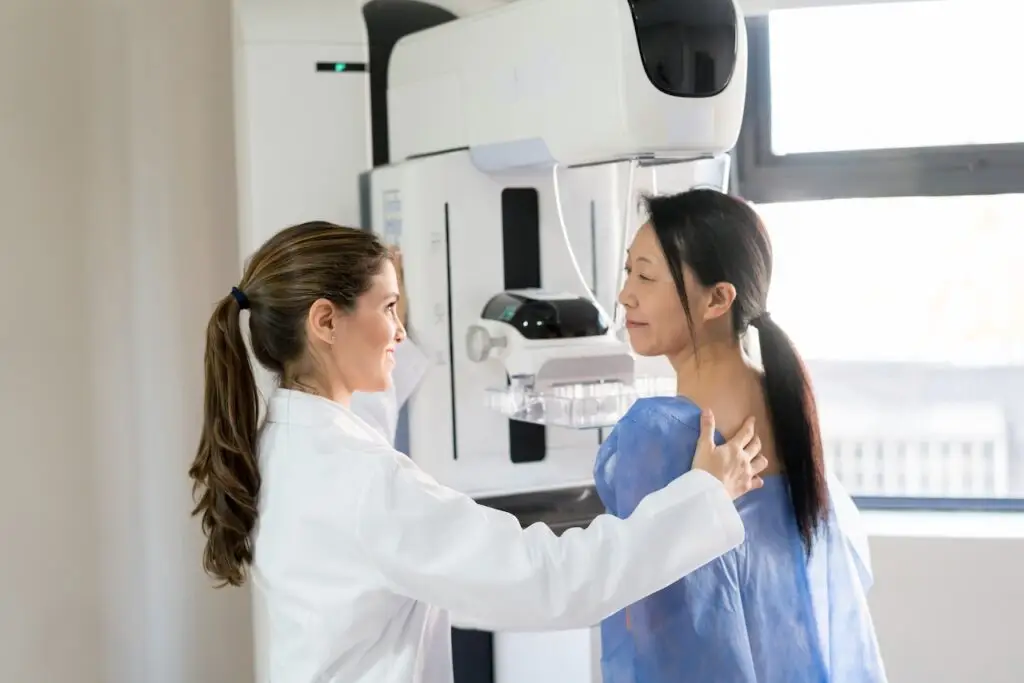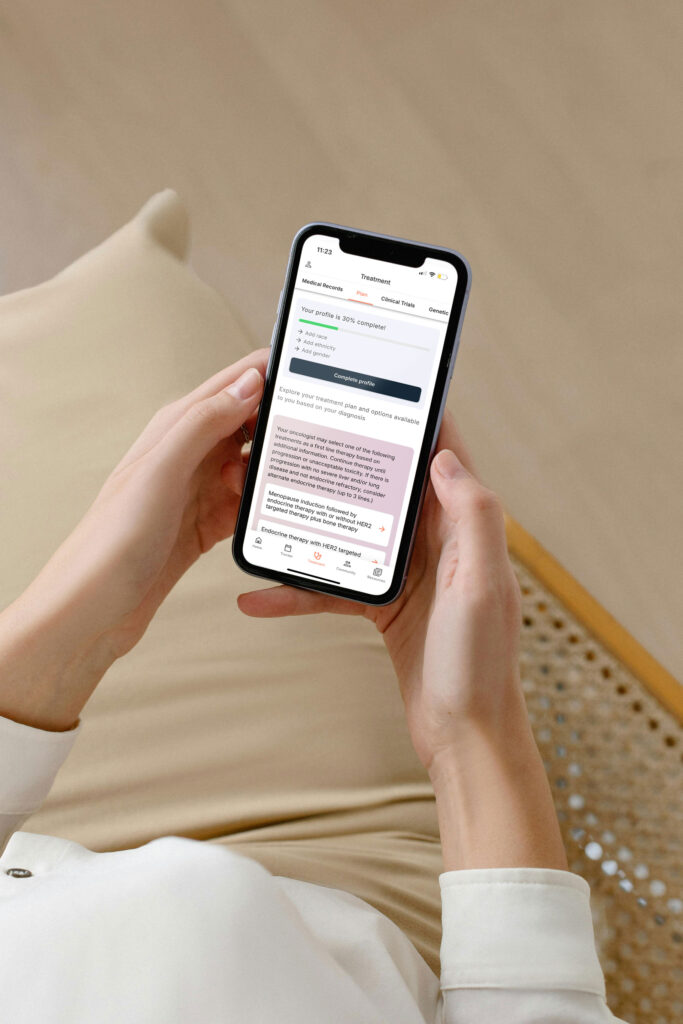CDK 4/6 inhibitors: Monitoring effectiveness and resistance
For patients with hormone receptor-positive, HER2-negative, metastatic breast cancer, CDK 4/6 inhibitors in combination with hormone-blocking therapy is the frontline treatment option. In our interview with Dr. Pooja Advani, we explore the latest advancements in CDK 4/6 inhibitors and what to expect while you’re on treatment. Dr. Advani is an esteemed breast oncologist and the Director of the Robert and Monica Jacoby Center for Breast Health at Mayo Clinic, Jacksonville.
View the full discussion with Dr. Advani for more information on CDK4/6 inhibitors.
Below are key points on monitoring the effectiveness of CDK 4/6 inhibitors transcribed from the discussion.
The following questions and responses have been lightly edited for grammatical purposes.
1) How do you monitor the effectiveness of CDK 4/6 inhibitors during treatment?
Typically in clinical practice, we would get scans done regularly when patients are taking these drugs. It can be every three to four months or so. We tend to space them apart a little bit more as patients have been on them for a very long time. For my patients who’ve been on CDK 4/6 inhibitors for three, four, or five years, I get their scans done every six months, for example.
Some of us will do [testing for] tumor markers, which are proteins that can be shed by the breast cells and we can measure those levels in the blood. This is not a perfect way that we have developed. It has been going on for several years where we’ve used these tumor markers, as we call them, in general for monitoring metastatic breast cancer patients. They’re not specific to monitoring CDK 4/6 inhibitors, but are commonly used in the clinic and are often done every month to every other month in addition to the scans.
Evidence-based guidance powered by NCCN Guidelines®
Personalized treatment plans shaped by the latest oncology standards—tailored to your diagnosis.
Get started
View your personalized treatment plan in the Outcomes4Me app
Use your diagnosis to unlock personalized NCCN Guidelines®-aligned recommendations.
Continue in app
2) Is there a role for liquid biopsy or other blood tests to monitor biomarkers during treatment with CDK 4/6 inhibitors?
When we think about monitoring patients for CDK 4/6 inhibitors as it pertains to specific biomarkers, no set test has been validated and approved according to the guidelines to monitor while patients are receiving this treatment.
However, liquid biopsy comes in when patients progress after receiving CDK 4/6 inhibitors. That has been determined by guidelines to show that it influences the choice of treatment after the patient’s progress.
There has been a lot of work done in clinical trials and research settings to think about using liquid biopsy, or what you call circulating tumor DNA, as a way to monitor the response. This has not been consistently shown to determine whether or not patients are accurately responding.
3) How do you know if a tumor expresses the biomarkers most likely to respond to CDK 4/6 inhibitors?
The biomarkers associated with response to CDK 4/6 inhibitors are quite broad and a lot of this work is done on a research basis. There’s no validated biomarker when we look at circulating tumor DNA to indicate that the patient is responding [to treatment].
On the contrary, we have some evidence to suggest there are certain mutations or abnormalities in the tumor cell that are associated with resistance to CDK 4/6 inhibitors. These have been much better validated compared to markers of response to CDK 4/6 inhibitors. That’s why we’re not routinely using circulating tumor DNA for the purposes of monitoring response while patients are receiving these drugs in the clinic.
4) How often should biomarkers be tested during treatment with CDK4/6 inhibitors to track progress?
We don’t have that good understanding yet. However, what we like to do for our patients for logistical purposes is to couple it with routine blood work that the patient is having.
When I get the patient started on a CDK 4/6 inhibitor, I initially get blood work every two weeks to look at their blood counts, their liver function, their kidney function, etc. At that time, I’ll also do this DiviTum® TKa biomarker, which is a blood test so it’s very easily added to a standard-of-care blood test.
Other scenarios where I’ve used DiviTum® TKa as a biomarker is to help facilitate conversations about reducing the dose of CDK 4/6 inhibitors, which can understandably generate a lot of anxiety. When patients see the DiviTum® TKa marker shows they’re continuing to respond, which means that it’s suppressed, it provides reassurance that even though we’ve reduced the dose of the medication to improve the quality of life and reduce side effects, we haven’t necessarily impacted the efficacy of the drug.
5) Are there specific questions that a patient should ask their healthcare professional relative to CDK4/6 inhibitors or a set of questions?
If my family member gets diagnosed with breast cancer, I have a set of questions I’d encourage them to ask their provider or clinician as it pertains to CDK 4/6 inhibitors.
Number one, what is the right CDK4/6 inhibitor for me? Right now, we may not have the best answer to that because the studies have not compared the three different CDK 4/6 inhibitors head-to-head, but that’s where conversation is important. What is the right drug for me?
The second question is related to the side-effect profile. What side effects can I anticipate?
The third question is: what does my monitoring look like? This is an area where very robust conversations should be undertaken to make sure that the clinician is using every tool in their toolbox to help facilitate that. That’s where I would ask the question of what biomarkers are currently available, even if they may not be in the NCCN Guidelines® yet. What biomarkers can my clinician use as a tool to provide me with some assurance that this drug is working for me? Particularly in scenarios where I’m reducing the drug, my scans are telling a different story, or my tumor markers are suggesting that I’m responding clinically and feeling better.
Finally, what advances are happening in this space? Even though you may not need another treatment at this point, I think it’s so beneficial for patients to know the latest developments that are happening in their cancer and its treatment because it provides an immense degree of hope.
Read part one of the Q&A to learn how CDK 4/6 inhibitors work here.
Personalized support for real care decisions
Understand your diagnosis, explore clinical trials, and track symptoms--all in one place.
Get started
Compare treatments, prepare for appointments, and track side effects—all in the app
Built for your diagnosis, Outcomes4Me gives you the tools to make confident, informed decisions—right when you need them.
Continue in app






